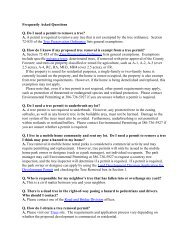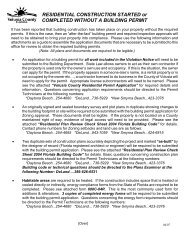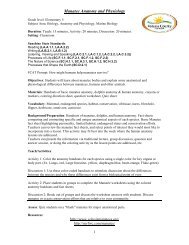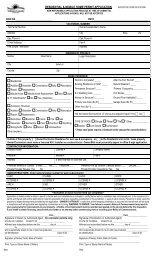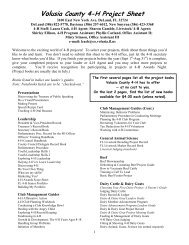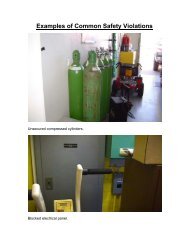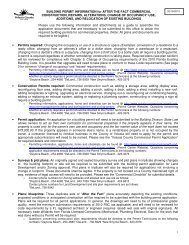Local mitigation strategy (LMS) - Volusia County Government
Local mitigation strategy (LMS) - Volusia County Government
Local mitigation strategy (LMS) - Volusia County Government
Create successful ePaper yourself
Turn your PDF publications into a flip-book with our unique Google optimized e-Paper software.
SECTION 5: HAZARD PROFILES5.11 STORM SURGE5.11.1 BackgroundStorm surge occurs when the water level of a tidally influenced body of water increases above thenormal astronomical high tide and is most common in conjunction with coastal storms with massivelow-pressure systems with cyclonic flows such as hurricanes, tropical storms and nor’easters. The lowbarometric pressure associated with these storms causes the water surface to rise, and storms makinglandfall during peak tides have surge heights and more extensive flood inundation limits. Storm surgeswill inundate coastal floodplains by dune overwash, tidal elevation rise in inland bays and harbors, andbackwater flooding through coastal river mouths. The duration of a storm is the most influential factoraffecting the severity and impact of storm surges.A storm surge is often described as a wave that has outrun its generating source and become a longperiod swell. It is often recognized as a large dome of water that may be 50 to 100 miles wide andgenerally rising anywhere from four to five feet in a Category 1 hurricane to over 20 feet in a Category 5storm. The storm surge arrives ahead of the storm center’s actual landfall and the more intense thestorm is, the sooner the surge arrives. Water rise can be very rapid, posing a serious threat to those whohave not yet evacuated flood-prone areas. The surge is always highest in the right-front quadrant of thedirection in which the storm is moving. As the storm approaches shore, the greatest storm surge will beto the north of the low-pressure system or hurricane eye. Such a surge of high water topped by wavesdriven by hurricane force winds can be devastating to coastal regions, causing severe beach erosion andproperty damage along the immediate shoreline.Storm surge heights and associated waves are dependent on not only the storm’s intensity but alsoupon the shape of the offshore continental shelf (narrow or wide) and the depth of the ocean bottom(bathymetry). A narrow shelf, or one that drops steeply from the shoreline and subsequently producesdeep water close to the shoreline, tends to produce a lower surge but higher and more powerful stormwaves. The storms that generate the largest coastal storm surges can develop year-round, but they aremost frequent from late summer to early spring.5.11.2 Location and Spatial ExtentMany areas in <strong>Volusia</strong> <strong>County</strong> are subject to potential storm surge inundation. Figure 5.11 illustrateshurricane storm surge inundation zones for <strong>Volusia</strong> <strong>County</strong> derived from geo-referenced SLOSH (Sea,Lake and Overland Surge from Hurricanes) data produced by the USACE in coordination with NOAA.SLOSH is a modeling tool used to estimate storm surge for coastal areas resulting from historical,hypothetical or predicted hurricanes taking into account maximum expected levels for pressure, size,forward speed, track and winds. Therefore, the SLOSH data is best used for defining the potentialmaximum surge associated with various storm intensities for any particular location.As shown in the figure, all of <strong>Volusia</strong> <strong>County</strong>’s coastal areas are at high risk to storm surge inundation inaddition to most riverine floodplains along major rivers in southern portions of the area. While areas notlocated immediately along the coast or major rivers may not be directly impacted by storm surge<strong>Volusia</strong> <strong>County</strong> Multi-jurisdictional <strong>Local</strong> Mitigation StrategyFebruary 20105:54



